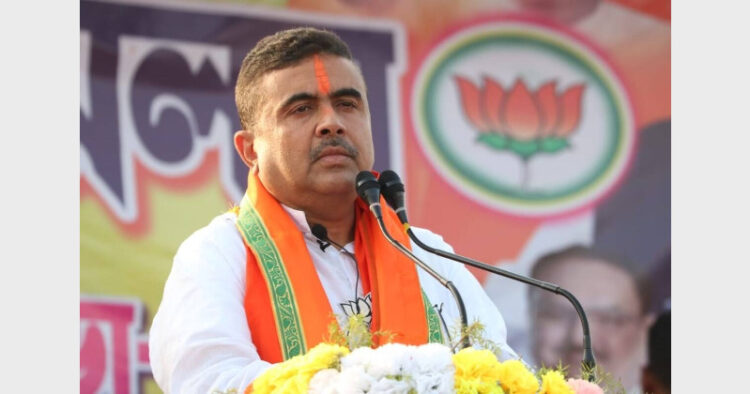West Bengal, India: On April 10, the Calcutta High Court reserved its order in BJP MLA and West Bengal Leader of Opposition Suvendu Adhikari’s PIL seeking a CBI/NIA probe into the incidents of violence that occurred during the Ram Navami procession, Live Law reported.
The West Bengal Government’s counsel, Advocate General Soumendra Nath, opposed the call for an NIA probe into the incidents of violence. The counsel submitted that West Bengal Police are investigating the incidents. Furthermore, the counsel submitted that there needs to be sufficient material and the Government of India’s satisfaction that the situation fits the case for ordering an NIA probe.
Furthermore, the Government of India’s counsel submitted that if explosives have been used and blasts have taken place, then the NIA act is attracted and it becomes the Government of India’s prerogative to order an NIA probe suo moto.
The Court orally remarks on the West Bengal Government’s arguments and said that the matter appears to be serious enough as the reports prima facie suggest that the violence was pre-planned. The Court said that the central agencies will be better placed to probe the matter. Furthermore, the Court observed that the West Bengal Police used pellet guns and tear gas to disperse the crowd which hints that the case may be of large-scale violence.
The Court made oral observations that the reports prima facie show that the incidents of violence were all pre-planned as stones pelted from rooftops could not have been taken there within 10-15 minutes. The Court said there was an intelligence failure. The Court said, “Reports prima facie show they (violent incidents) were all pre-planned. There is an allegation that stones were pelted from the rooftops, obviously, stones could not have been taken in 10-15 minutes to the rooftop…There was an intelligence failure,” Live Law reported.
Furthermore, the Court insinuated that there might be a larger conspiracy said, “The problem is two-fold. One is whether it is between two groups. The other is, a third group could be taking advantage of the situation. If that group is involved, then this needs to be probed by a central agency because it is difficult for the state police to find out. Who has come in to take advantage?… Somebody would have set the fire, set the ball rolling, so, to identify that outside source unless a central agency comes, you cannot probe,” Live Law reported.
Furthermore, the Court noted that swords, bottles, broken glasses, and acid were used in the violence and that the internet was restricted showing incidents of large-scale violence.
The Court also observed that in the recent past, there have been various incidents of large-scale violence in West Bengal during religious events. The Court said, “…within 4-5 months, the state has got 8 orders of the High Court and all these matters concern to violence during religious events. Does it not reflect something else? In my 14 years of being a Judge, I have not seen so many orders…Is it incapacity of Police, or failure of intelligence, sensitization of the officers at the lower level, what is it?” Live Law reported.
The Court questioned the West Bengal Government’s counsel on why the state’s reports do not mention explosives and bombs even though the same was widely covered in the media. The West Bengal Government’s counsel denied the allegations concerning the use of bombs and explosives and said that the same is baseless.
However, the other counsels submitted that the Trinamool Congress Chairperson and West Bengal Chief Minister Mamata Banerjee made statements to divide the state on the basis of religion. Another counsel submitted that the West Bengal Police consciously did not invoke the Explosive Substances Act to avoid falling into scheduled offences.




















Comments